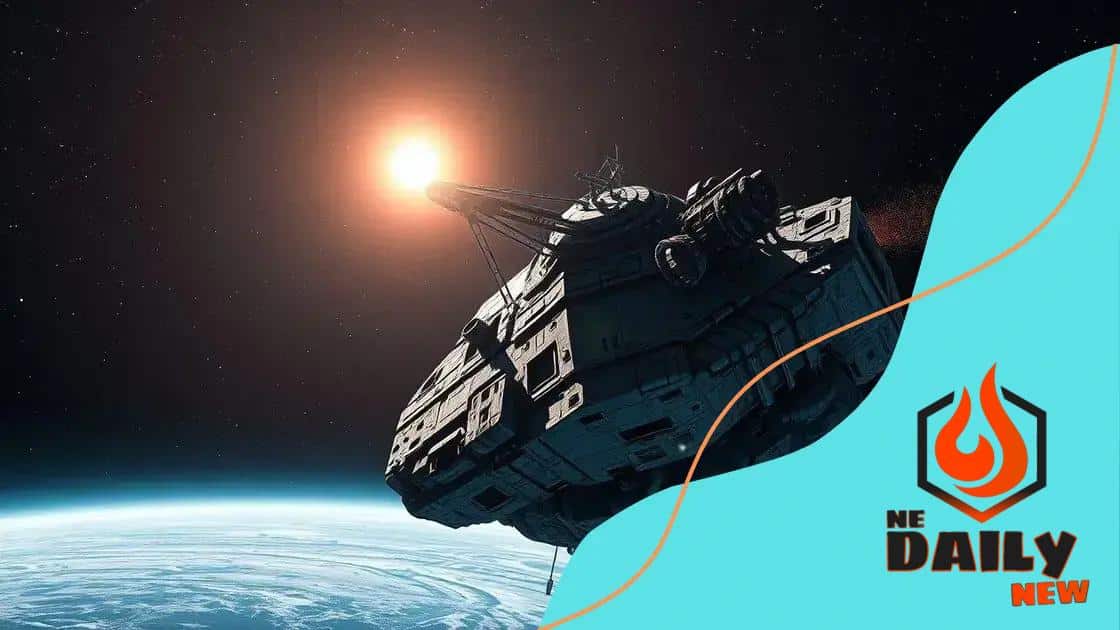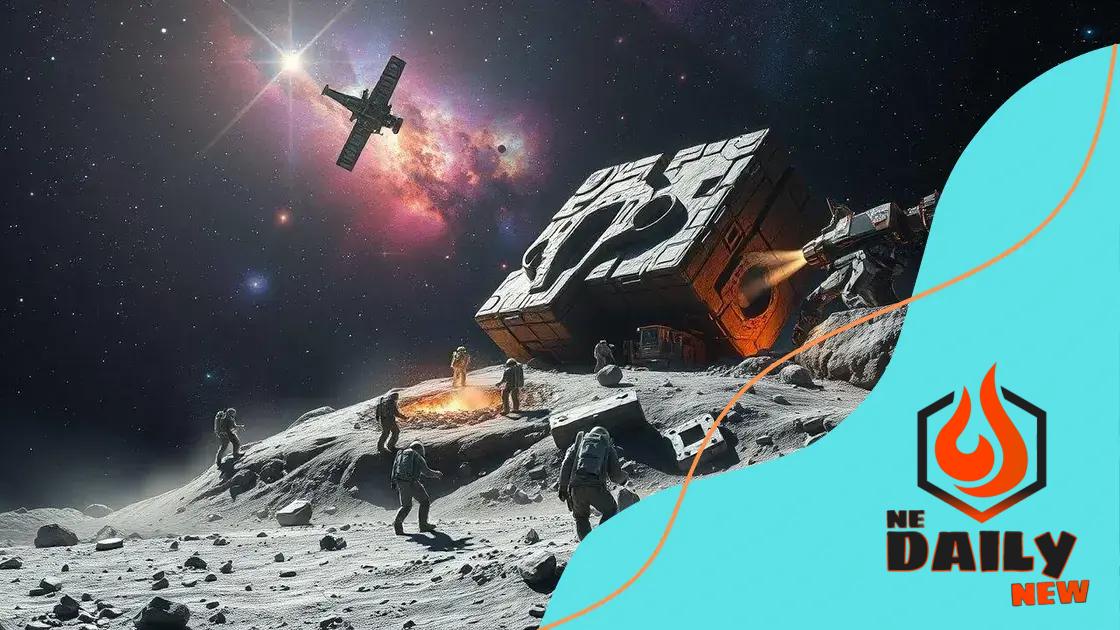The future of space mining and its economic potential

The future of space mining presents significant economic potential through resource extraction, driven by advancements in technology and robotics, despite challenges such as high costs and regulatory issues.
The future of space mining holds incredible promise, potentially transforming not just our economy, but also our understanding of resources in the cosmos. Have you ever imagined how extracting valuable minerals from asteroids could impact life on Earth? Let’s dive deeper into this fascinating topic.
Understanding space mining
Understanding space mining is crucial as we venture into our solar system to tap into its vast resources. This burgeoning field not only aims to source invaluable materials but also has the potential to change how we think about resource management on Earth.
Space mining involves extracting materials from asteroids, comets, and other celestial bodies. The primary resources targeted include precious metals like gold and platinum, as well as water, which can be transformed into fuel for further space exploration. The significance of space mining cannot be understated, as it could alleviate resource scarcity on our planet.
The main materials found in space
Several types of materials are plentiful in space. Here are some of the most notable:
- Metals: Asteroids are rich in metals like iron, gold, and platinum.
- Water: Found in ice form, water can be essential for sustaining life and creating fuel.
- Rare earth elements: Vital for technology, these elements can be found in various celestial bodies.
The process of space mining involves missions to identify and extract these resources, often utilizing advanced robotics and AI systems designed for operations in harsh environments. For example, missions might aim to mine asteroids, drawing on the valuable materials they contain. Investments in this area are expected to accelerate as both governments and private companies realize the potential benefits.
Economic implications of mining in space
The economic impact of space mining extends far beyond simple extraction. By tapping into extraterrestrial resources, we can lessen our reliance on Earth-bound materials.
This could significantly reduce the cost of space exploration and open up new markets. As we develop infrastructure for space mining, we could also create new jobs and industries devoted to resource extraction and processing.
Key resources and materials in space
When discussing key resources and materials in space, it’s essential to understand what we can find beyond Earth. Space is not just a vast void; it is filled with valuable resources that could help sustain life and fuel technological advances.
A major focus of space mining is on asteroids, which are often rich in various materials. For instance, many asteroids contain metals such as nickel and iron. These metals could be used to build spacecraft and stations. Additionally, some asteroids hold precious metals like gold and platinum, which are highly sought after on Earth.
Types of resources found in space
Here are some of the most critical resources that scientists and companies are targeting:
- Metals: Asteroids provide a wealth of metals, including iron, nickel, and rare metals like platinum.
- Water: Water ice is abundant on many comets and asteroids, crucial for sustaining future space missions.
- Helium-3: This isotope, found on the Moon, has the potential to be a clean energy source.
- Silicates: These can be used for manufacturing and construction in space.
The availability of these resources could enable deeper space exploration and even colonization efforts. For example, using water from asteroids could reduce the cost of fueling spacecraft.
Moreover, as technology advances, the feasibility of extracting these materials becomes more realistic. Many believe that the economic potential of space resources is enormous. By utilizing materials found in space, we may one day be able to create a sustainable presence beyond Earth.
Economic implications of space mining

The economic implications of space mining are vast and potentially transformative. As nations and private companies explore the option of extracting resources from space, they open up new avenues for economic growth and innovation.
One major benefit is the potential reduction in material costs. Extracting materials such as metals and water from asteroids could decrease our dependence on Earth-based resources. This shift could offer significant savings in manufacturing and construction costs.
Benefits of space mining
Consider the following advantages:
- New markets: Space mining can create new industries focused on resource extraction and processing.
- Job creation: As this industry grows, it will generate numerous jobs in engineering, robotics, and resource management.
- Innovation: The challenges of mining in space can drive technological advancements that may benefit other industries.
Another important aspect is the potential for international collaboration. As countries band together for missions focused on space mining, we may see increased partnerships in technology sharing and research. This collaboration can lead to a more unified approach to resource management.
Moreover, the prospect of space mining can help secure resources for future generations. By tapping into asteroids, we can ensure that essential materials are available for prolonged space exploration and even colonization efforts.
Technological advancements facilitating space mining
The technological advancements facilitating space mining are key to making this ambitious goal a reality. Recent innovations in robotics, AI, and materials science have opened the door to possibilities once thought impossible.
Robotic technologies play a significant role in the future of space mining. These machines can explore hostile environments, navigate asteroids, and perform precise extraction tasks. Automation reduces the need for human presence in dangerous conditions, making the entire process safer and more efficient.
Key technologies driving progress
Several specific innovations are shaping the landscape of space mining:
- Autonomous spacecraft: These vehicles can operate without human intervention, allowing for continuous exploration and mining operations.
- Advanced sensors: Sensors that can analyze materials and determine the best way to extract them are essential for efficient mining.
- 3D printing: This technology can help create parts or even entire structures in space, reducing the need to transport materials from Earth.
- Propulsion systems: Innovative propulsion technologies enable spacecraft to travel faster and reach asteroids more efficiently.
AI plays a vital role in analyzing data and making real-time decisions during mining operations. By processing vast amounts of information, AI can optimize routes and strategies for resource extraction.
In addition to robotics and AI, research into new materials is crucial. Lightweight, durable materials can enhance spacecraft design, making them more efficient for deep space missions. Innovations in these areas promise to lower costs and expand our capabilities for resource extraction beyond Earth.
Challenges and opportunities in the space mining industry
The challenges and opportunities in the space mining industry indicate a thrilling but complex future. As we venture into this new frontier, it’s essential to balance the possibilities with the hurdles that come with them.
One significant challenge is the high cost of launching missions. Space mining requires advanced technology and significant resources to send spacecraft to remote locations. This financial barrier makes initial projects risky and often difficult to fund. Moreover, the technical challenges of operating machinery in the harsh environment of space cannot be overlooked.
Key challenges faced in space mining
Here are some of the main challenges:
- High operational costs: Getting to space and back is expensive, making it crucial to find ways to lower costs.
- Technical difficulties: Operating mining equipment in space involves navigating low gravity and radiation.
- Legal and regulatory issues: Space law is still developing, complicating ownership and resource rights.
On the other hand, these challenges present unique opportunities for innovation. For example, as companies develop new technologies for space mining, they can also improve existing technologies for Earth-based applications.
There is a growing interest from private investors, which reflects the potential profitability of space mining. Investments in research and technology development can lead to significant advancements that lower costs and increase efficiency. The partnerships between governments and private companies also create a collaborative atmosphere that fosters growth.
Ultimately, the intersection of these challenges and opportunities could lead to a thriving space mining industry that not only benefits space exploration but also brings valuable resources back to Earth.
FAQ – Frequently Asked Questions about Space Mining
What materials can be mined in space?
Space mining can target metals like gold and platinum, as well as water and rare earth elements that are valuable for technology.
What are the main challenges faced in space mining?
The main challenges include high operational costs, technical difficulties in harsh conditions, and legal issues regarding resource ownership.
How does technology impact space mining?
Advancements in robotics and AI are crucial for improving efficiency, safety, and the precision of mining operations in space.
What opportunities does space mining present for the economy?
Space mining can create new markets and jobs, driving innovation and potentially reducing reliance on Earth’s resources.





